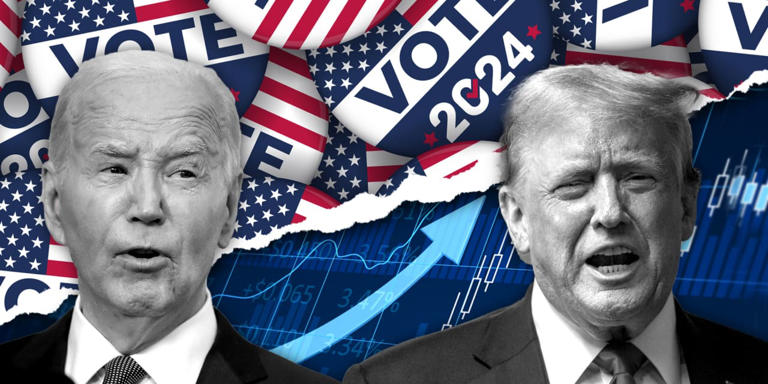The S&P 500 index just recorded its strongest May performance since 2020, which has sparked investor speculation about the potential for a summer rally. This outcome defies the well-known Wall Street adage, “sell in May and go away,” which suggests that the market typically underperforms during the summer months.
Ed Clissold, chief strategist at Ned Davis Research, commented on this development in a Friday interview with MarketWatch. Clissold noted that a strong performance in May often indicates a higher likelihood of a sustained rally into the summer. “Momentum leads price, and a strong May increases the odds of a decent summer rally,” Clissold said. While macroeconomic factors such as inflation reports, jobs data, and Federal Reserve commentary will undeniably influence market movements, Clissold emphasized that the current market momentum suggests a solid uptrend, indicative of a bullish sentiment prevailing among investors.
The S&P 500’s 4.8% rise in May marks its best performance for the month since 2009, when it climbed 5.3% as stocks rebounded from the financial-crisis low set in March of that year. Historically, May has not been a strong month for the market, typically seeing an average decline of 0.1% and ranking as the second worst-performing month of the year. This historical context supports the “sell in May and go away” adage, which has led investors to expect weaker market performance from May to November.
However, analysts argue that this saying oversimplifies market trends. Clissold noted in a recent report that since 1950, the S&P 500 has risen 77.8% of the time from April 30 to October 31 in presidential election years, making it the strongest period in the four-year election cycle. The median gain during these months is 3.3%, the second highest across the cycle. This suggests that presidential election years might disrupt the usual seasonal patterns, potentially offering more favorable market conditions.
The uncertainty of presidential elections can influence market performance significantly. Clissold highlighted that markets tend to perform better when the election outcome is clear early on. For example, during Bill Clinton’s re-election in 1996, the market saw a 20.3% gain for the year, as his victory was never in much doubt. Conversely, in 2004, the market was more volatile due to uncertainty about George W. Bush’s re-election, which wasn’t confirmed until late in the year.
This year’s unique political landscape adds another layer of complexity. Trump’s recent conviction and the anticipated rematch between him and Biden, a scenario not seen since 1956, create additional uncertainty. Clissold mentioned that the lack of serious primary challenges for both Biden and Trump might have initially eased investor concerns, but the overall political climate remains unpredictable.
The “sell in May” strategy has not been particularly effective in recent years, regardless of the presidential cycle. Since 2012, the S&P 500 has risen in 10 out of 12 years during the summer months, with a median gain of 3%. Despite this, Clissold advises that investors should still consider the historical data when making decisions.
Steve Sosnick, chief strategist at Interactive Brokers, also noted that it’s too early to determine whether the “sell in May” strategy will be relevant this year. “A popular refrain that I’ve heard recently is that ‘Sell in May’ hasn’t worked this year. Indeed, so far it hasn’t. But all we really know is that ‘Sell in April’ and ‘Sell in early May’ haven’t worked,” Sosnick wrote. He emphasized that only time will tell if “sell in May” proves effective for 2024, suggesting that June and the following months will be crucial in evaluating this strategy.
The broader market dynamics also point to underlying resilience. Despite various macroeconomic headwinds, including persistent inflation concerns, the S&P 500 has demonstrated robust performance. This resilience is partially attributed to strong corporate earnings and optimistic forward guidance from several key sectors, including technology and consumer goods. The Federal Reserve’s actions and statements continue to play a pivotal role in shaping market expectations, particularly regarding interest rates and monetary policy.
Additionally, global economic factors are influencing U.S. market performance. Developments in major economies such as China and the European Union, along with geopolitical events, are contributing to the complex market environment. For instance, supply chain disruptions and fluctuating commodity prices are factors that investors must consider in their strategies.
Investor sentiment remains cautiously optimistic, buoyed by strong economic indicators and corporate performance. The labor market’s strength, as reflected in recent jobs reports, suggests a solid foundation for continued economic growth. However, concerns about wage inflation and its potential impact on corporate margins persist.
In conclusion, while the S&P 500’s strong May performance and historical trends suggest a potential summer rally, the market’s direction will ultimately depend on a myriad of economic and political factors. Investors should remain vigilant and stay informed about ongoing developments to navigate this complex environment effectively. The evolving political landscape, macroeconomic indicators, and global economic conditions will all play critical roles in shaping market trends in the coming months.
